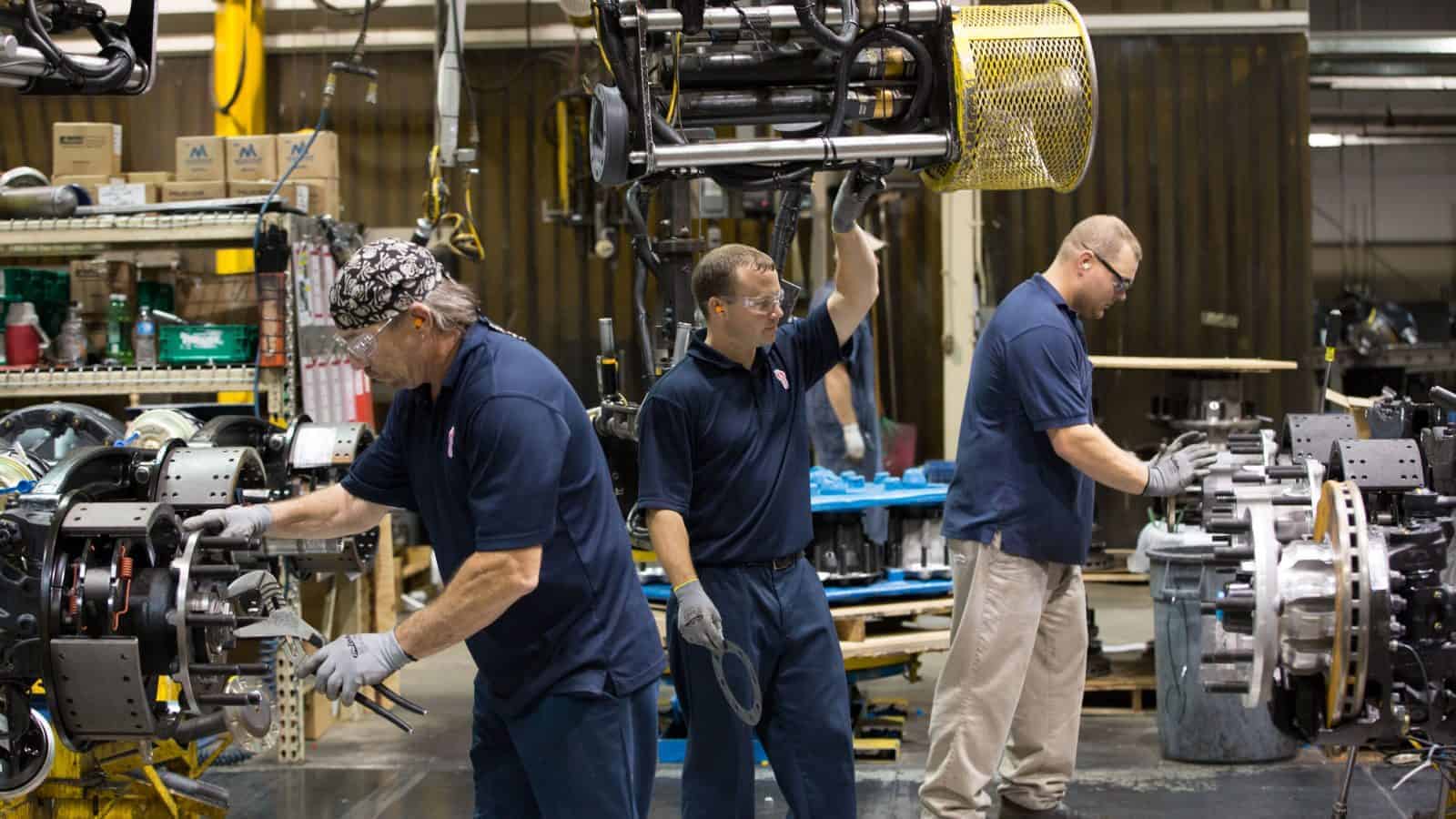An Army Vet Finds Military Values in Manufacturing

Hugo Hinojosa loved being in the military. He served 22 years in the U.S. Army, with time in eight different duty stations. His service gave him the opportunity to get a degree, travel the world, see different places and forge close-knit friendships that he says will last a lifetime. When it came time for him to transition out of the military, he was open to ideas—and during a career skills program briefing at Fort Hood’s Copeland Center, a presentation from Heroes MAKE America captured his attention.
Endless opportunities: After a career spent moving around the globe, Hinojosa was hoping to stay in his home state of Texas for the long term. During the presentation from a representative of Heroes MAKE America, he was struck by the breadth of roles the manufacturing industry offered.
- “When they came out and told me about opportunities and other jobs in the surrounding area, I said, wow, this might be for me,” said Hinojosa. “With the certifications the program offered, you could work anywhere in the industry. I wasn’t limiting myself to a certain, specific job. I could work anywhere, you name it. The opportunities are endless.”
A unique experience: Hinojosa began his time in the program in the midst of the COVID-19 pandemic, which meant that some elements had to be adjusted to fit the logistical reality. But participants still received plenty of engagement: classroom lessons were shifted to a virtual format, and students met with program managers two at a time for a few hours every week. While it required a fair amount of self-direction and motivation, Hinojosa said that the program supported him as he learned at his own pace.
A powerful network: Hinojosa found the networking aspect of the program to be especially valuable once he began looking for work.
- “Every time we would have potential employers in team meetings, I would search them on LinkedIn and connect with them,” said Hinojosa. “I said, I saw you today during class, I’d like to connect. I started building my own network from there.”
The right stuff: The work paid off. Hinojosa received several offers and ended up getting hired by WestRock Company through meetings that were set up by Heroes MAKE America. He began as a member of the company’s management trainee program and was quickly recruited to work as a business partner in the human resources department. He sees his new career as a natural extension of his time as a service member.
- “Everywhere I go, I’m a steward of the Army,” said Hinojosa. “I’m working in a place where the values are in line with what I was brought up with in the military—integrity, respect, accountability and excellence.”
Today, Hinojosa encourages other transitioning service members to see themselves in a manufacturing career—and most importantly, to recognize their own skills.
The last word: “Don’t sell yourself short,” said Hinojosa. “Believe in the skills the military has given you. You’ve been trained and given skills that will pay dividends out here in the manufacturing industry. And the work ethic that’s instilled from day one is going to show.”
“If Taxes Go Up, I Have Fewer Choices,” Says Manufacturing CEO
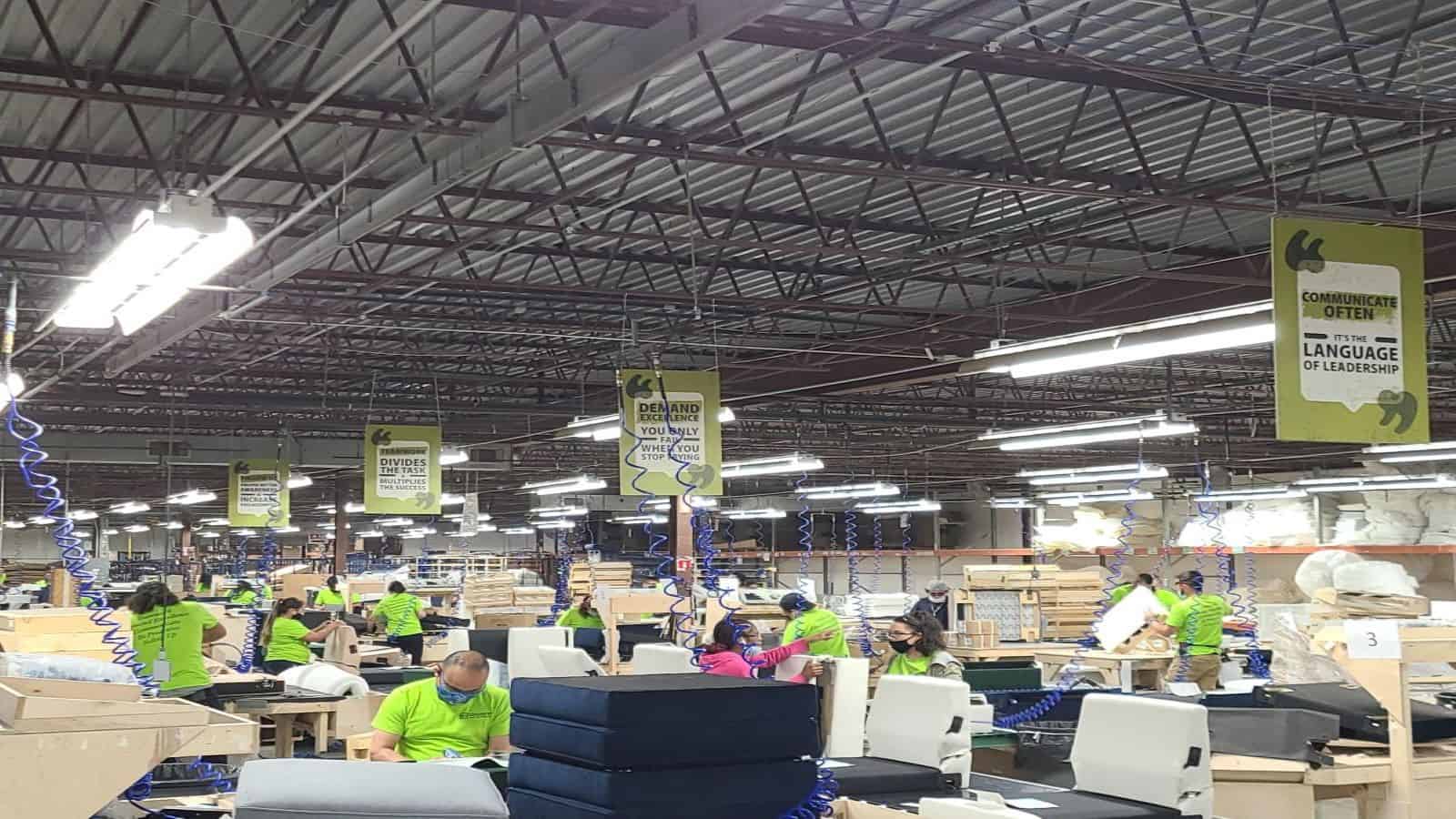
Klaussner Home Furnishings has made three increases in its workers’ wages over the past 10 months, while also adding benefits. Yet, the company’s ability to invest in workers and add much-needed equipment may be in danger if Congress proceeds with proposed tax hikes, according to President and CEO Terry McNew. These increases could do real harm to manufacturers at a time when the economy is starting to recover from the pandemic.
Benefits for workers: McNew, who has led Klaussner for about a year and a half, explains that he’s working hard to take the company from the 19th century to the 21st century—“skipping over the 20th,” he says—by eliminating the use of piecework and ensuring that all current workers have full 40-hour workweeks.
- That transition included the wage increases mentioned above, as well as an expansion of benefits, such as a reduction in health insurance deductibles and the addition of mental and behavioral health benefits.
- “If taxes go up, I have fewer choices,” says McNew. “I’ll have even more limited resources” for raises and other benefits.
Facility expansion: McNew also credits tax reform with helping Klaussner improve its facilities and buy much-needed equipment.
- Late last year, the company installed new roofs, and it is currently in the market for new sewing machines. Its new CIO is looking to invest in enterprise resource planning and materials requirements planning software, which will cost about $5 million.
- McNew says these plans were made possible by a tax provision called full expensing, which allows companies to deduct the full cost of capital expenditures in a single year.
The economic context: McNew points out that manufacturers are dealing with a number of difficulties right now, including higher materials and shipping costs, which are amplifying their worries about potential tax changes.
- In light of all these factors, McNew says, “I told my executive staff we are not getting raises this year, but instead giving raises to employees.”
The last word: NAM President and CEO Jay Timmons said, “As we emerge from the economic catastrophe caused by COVID-19, American businesses are at a pivotal point in our nation’s history. Manufacturers like Klaussner are helping to lead the economic recovery in the wake of the pandemic. But increasing the tax burden on companies in America would mean fewer American jobs, lower wages and a smaller economy.”
Second Chance Hiring Strengthens Manufacturing
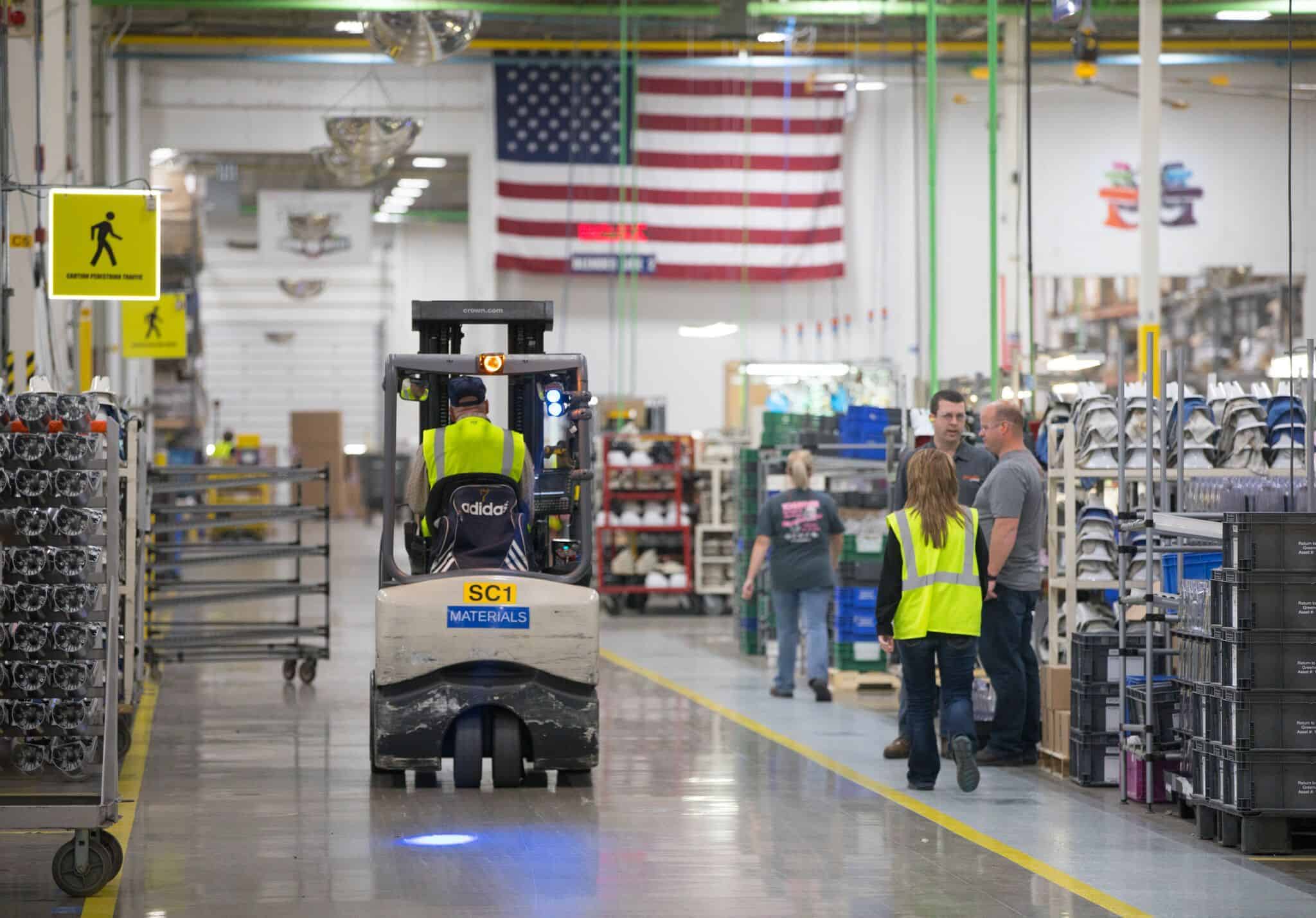
Helping people with criminal records find good jobs is not just the right thing to do, but a way to strengthen the manufacturing industry for years to come. That’s why The Manufacturing Institute—the workforce development and education partner of the NAM—is partnering with Stand Together and the Charles Koch Institute to help manufacturers recruit from this population and fill some of the thousands of job openings within the industry.
Brianna Nuhfer, director of criminal justice for the Stand Together philanthropic community, spoke to us recently about the importance of second chance hiring and the opportunities it offers for manufacturers.
Why it matters: A criminal record is often a significant barrier to employment, preventing people from finding new jobs and building better lives. Not all people with criminal records have been incarcerated, but for those who have been, second chance hiring also significantly increases the success of reentry.
- “The vast majority of incarcerated individuals—over 95% of people who are incarcerated—will be returning to our communities and our neighborhoods,” Nuhfer says. “We want to make sure that their return is as successful as possible, and we know that employment is one of the primary factors that helps people get back on track and avoid recidivism or returning to prison.”
Why it matters for manufacturers: Hiring Americans with criminal records is also important for the success of the manufacturing industry. Right now, manufacturers are facing a significant shortage of skilled workers; in fact, a recent study by Deloitte and the MI suggests that the skills gap could result in 2.1 million unfilled jobs by 2030. Manufacturers need workforce-ready employees, and many people with criminal records fit the bill.
Building a smart workforce: According to Nuhfer, research shows that workers with criminal records often have the lowest turnover rates of all employees. She cites several other key advantages:
- 82% of managers report that the value these workers bring to companies is just as high as—if not higher than—the value that their employees without criminal records provide.
- Many formerly incarcerated people received manufacturing-related training while they were in correctional facilities, preparing them for work in the modern industry.
Building partnerships: The partnership with the MI will increase awareness of second chance hiring opportunities and help manufacturers recruit, train and support these workers.
- “The NAM and The Manufacturing Institute have such an incredible reach across the country, and their leadership is undeniable,” said Nuhfer. “The resources you put out for the field are utilized and noticed—and so your involvement and your commitment to this issue is going to have an incredible ripple effect across the country, opening up thousands of employment opportunities for deserving individuals.”
Creating a culture: For company leaders interested in second chance hiring, Nuhfer has some simple advice: these hiring practices shouldn’t just be a matter of policy, but also a matter of culture. Leaders should demonstrate by example that their companies value smart, talented workers of all backgrounds.
The MI says: “Second chance hiring gives businesses an opportunity to welcome highly motivated, engaged, productive and loyal new team members who may otherwise be overlooked,” said MI Executive Director Carolyn Lee. “This is not only the right thing to do for our businesses, but it’s also the right thing to strengthen our communities.”
The last word: “All of us are more than our choices, good or bad,” said Nuhfer. “None of us wants to be defined by the worst decision we’ve ever made for the rest of our lives.”
To learn more about second chance hiring, register here for an upcoming webinar on June 10.
The Manufacturing Institute Goes to Capitol Hill

Manufacturing Institute Executive Director Carolyn Lee testified virtually before the House Committee on Veterans’ Affairs’ Subcommittee on Economic Opportunity yesterday, detailing the MI’s work with transitioning service members during the pandemic. Here are some highlights from her testimony.
COVID-19’s impact: According to Lee, the COVID-19 pandemic made it much more difficult for transitioning service members to access key resources, including training programs, fellowships and internships.
Our work: The MI’s Heroes MAKE America initiative helped develop workarounds for these challenges, Lee testified.
- “At the onset of the pandemic, we collaborated with our education partners to pivot most of our program delivery to virtual platforms or socially distanced environments—within a matter of weeks,” she said. “COVID-19 also accelerated the deployment of fully remote learning for Heroes participants, proving that we can deliver some certifications online.”
- Lee also highlighted the launch of Heroes Connect, which allowed transitioning service members to network virtually with hiring managers from manufacturers across the country.
Heroes’ overall success: The Heroes program has been very successful since its creation only three years ago, Lee noted. “Since its inception in January 2018, Heroes MAKE America has had a placement rate of 92%. Participants have found jobs at more than 250 companies in 39 states.”
- She added, “Notably, 55% of our participants have no post-secondary education, indicating a strong need for support to position them for success in a career after their time in uniform.”
What policymakers can do: Lastly, Lee recommended policy changes that could make military transitions more accessible to service members and their families.
- First, “Congress should change eligibility requirements for Pell grants to allow students to pursue high-quality programs as short as eight weeks.”
- In addition, Lee recommended a separate allocation of funding under the Workforce Innovation and Opportunity Act for the military community. While those funds are currently given directly to states, which place limits on their use, service members may participate in training virtually or in a different location than where they transition. They need the flexibility to receive training or plan careers without worrying about state lines.
The last word: “Veterans are well positioned to succeed in a manufacturing career with skills, talents and training that are highly valued in the industry,” said Lee. “And with more than 700,000 manufacturing jobs open today—and 4 million to fill by 2030—they are in great demand. The Manufacturing Institute is committed to helping today’s American heroes become tomorrow’s manufacturing leaders.”
2.1 Million Manufacturing Jobs Could Go Unfilled by 2030
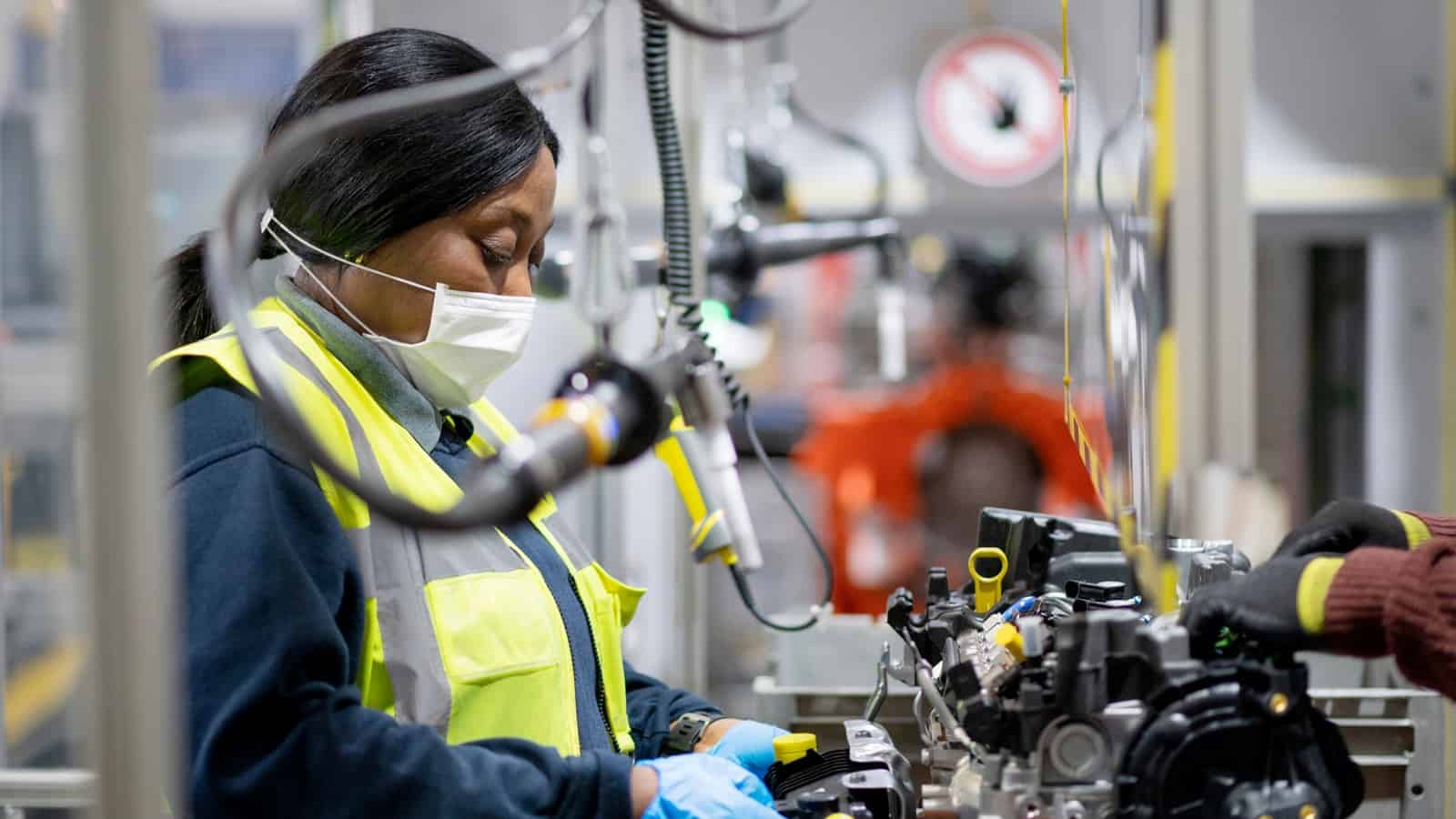
The manufacturing skills gap in the U.S. could result in 2.1 million unfilled jobs by 2030, according to a new study by Deloitte and The Manufacturing Institute, the workforce development and education partner of the NAM. The cost of those missing jobs could potentially total $1 trillion in 2030 alone.
The study’s dramatic findings come from online surveys of more than 800 U.S.-based manufacturing leaders, as well as interviews with executives across the industry and economic analyses. All told, they paint a worrying picture of manufacturing’s labor shortage. The lack of skilled labor was the industry’s major challenge even before the pandemic, according to the NAM’s quarterly outlook surveys—and this new study shows it’s still a major concern today.
The hard data: About 1.4 million U.S. manufacturing jobs were lost during the early days of the pandemic, according to the study, setting back the manufacturing labor force by more than a decade. However, the industry has largely recovered those lost jobs and is now urgently seeking more workers.
- While the manufacturing industry recouped 63% of jobs lost during the pandemic, the remaining 570,000 had not been added back by the end of 2020, despite a near record number of job openings in the sector.
The inside scoop: Manufacturers surveyed reported that finding the right talent is now 36% harder than it was in 2018, even though the unemployment rate has nearly doubled the supply of available workers.
- Executives reported they cannot even fill higher paying entry-level production positions, let alone find and retain skilled workers for specialized roles.
- A long-term challenge: 77% of manufacturers say they will have ongoing difficulties in attracting and retaining workers in 2021 and beyond.
Deloitte says: “Given the foundational role the manufacturing sector plays in our nation’s economy, it is deeply concerning that at a time when jobs are in such high demand nationwide, the number of vacant entry-level manufacturing positions continues to grow,” said Paul Wellener, Deloitte vice chairman and U.S. industrial products and construction leader. “Attracting and retaining diverse talent presents both a challenge and solution to bridging the talent gap. To attract a new generation of workers, the industry should work together to change the perception of work in manufacturing and expand and diversify its talent pipeline.”
The Institute says: “Manufacturers are proud to lead efforts to build stronger, more diverse and inclusive workplaces because we are committed to being the solution,” said Carolyn Lee, executive director of the Institute. “As we expand our programs at The Manufacturing Institute, and work with the National Association of Manufacturers on initiatives like our Creators Wanted campaign and tour, we’re making sure that Americans of all backgrounds in all states can find a home in manufacturing and get equipped with the skills to seize these opportunities.”
Manufacturers React to President Biden’s First Speech to Congress
Timmons: “Manufacturers are focused on building the next, post-pandemic world.”
Washington, D.C. – Following President Joe Biden’s first presidential address to Congress, National Association of Manufacturers President and CEO Jay Timmons released this statement:
“Thanks to the leadership of vaccine manufacturers and the Biden administration’s successful vaccine distribution efforts, Americans are getting back to the activities and the people they love. Though the capacity limits in the House chamber tonight remind us that we still have a long way to go, our future is looking brighter.
“We look forward to working with President Biden to achieve historic infrastructure investment, including the many priorities offered in our ‘Building to Win’ plan, which, in addition to identifying areas of investment, also provides multiple funding solutions.
“Manufacturers have also provided roadmaps on critical issues ranging from immigration to climate change. We’re ready to work with President Biden and members of any party to deliver bipartisan progress on these issues and more, all while ensuring we’re strengthening the manufacturing workforce, not jeopardizing manufacturing growth in the United States.
“To that point, raising taxes on manufacturers—including many small businesses that pay at the individual rate—would stop our recovery in its tracks; we would lose 1 million jobs in just the first two years alone. Small manufacturers would be especially hard hit at this critical juncture, restricting their ability to raise wages and benefits, hire more workers and invest in their communities. Similarly, changes to the longstanding tax rules on the transfer of family businesses to the next generation of manufacturers would cost American jobs.
“Returning to archaic tax policies and one of the highest business tax rates in the developed world is not the way to build our future, nor are federal policies to force workers to join a union. Anti-worker policies like the PRO Act would inject uncertainty by driving a wedge in established employee–employer relationships and curtail future manufacturing investments that support our communities and families.
“As we continue to get armed against COVID-19, manufacturers are focused on building the next, post-pandemic world—one that affords even greater opportunity for all Americans.”
Background:
The NAM continues to put forward commonsense proposals to educate and inform policymakers on ways to strengthen manufacturing in America while achieving our shared objectives.
- Tax Policy Protecting Manufacturing Jobs
- “Building to Win” Infrastructure Plan
- “The Promise Ahead,” Taking Action on Climate
- “A Way Forward” on Immigration
- “Strengthening the Manufacturing Supply Chain”
-NAM-
The National Association of Manufacturers is the largest manufacturing association in the United States, representing small and large manufacturers in every industrial sector and in all 50 states. Manufacturing employs 12.3 million men and women, contributes $2.35 trillion to the U.S. economy annually and has the largest economic multiplier of any major sector and accounts for 63% of private-sector research and development. The NAM is the powerful voice of the manufacturing community and the leading advocate for a policy agenda that helps manufacturers compete in the global economy and create jobs across the United States. For more information about the NAM or to follow us on Twitter and Facebook, please visit www.nam.org.
Manufacturing Institute Takes on Second Chance Hiring
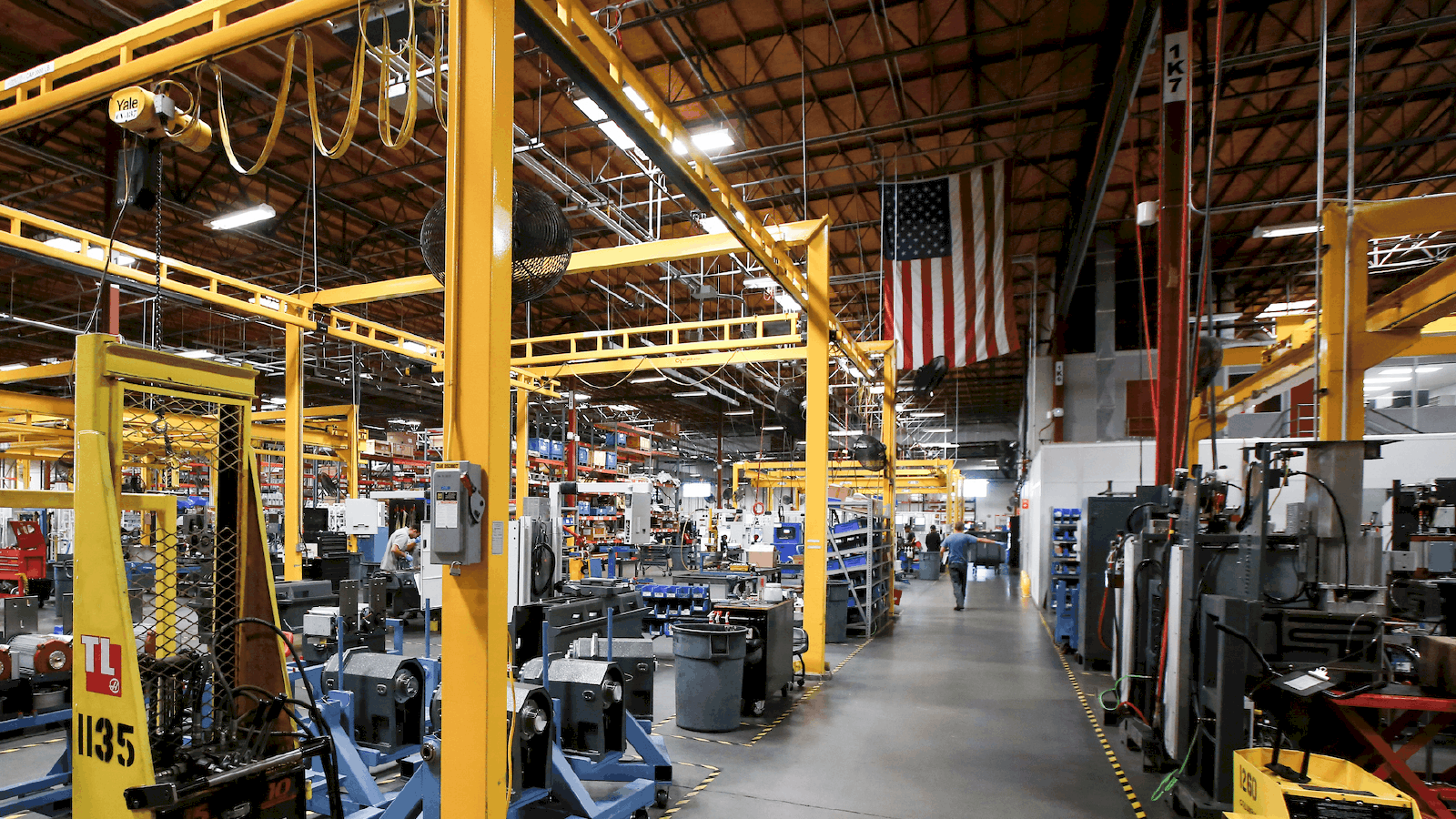
The Manufacturing Institute—the workforce development and education partner of the NAM—is partnering with the Charles Koch Institute to expand second chance hiring opportunities in the manufacturing industry.
What is second chance hiring? One in three Americans possess a criminal record. Without being offered a “second chance” at a stable job, many in this sizable talent pool are excluded from the workforce.
Why it matters: The manufacturing industry has more than half a million jobs open right now and will need to fill 4 million over the next decade. Second chance programs not only increase equal opportunity and diversity in the industry but are also a key tool for building manufacturing’s future workforce.
What we’re doing about it: The MI’s initiative, funded by a grant from the Charles Koch Institute, will offer resources and expertise to help employers make the best use of second chance hiring. These resources will include roundtable discussions and webinars, C-suite leadership events, case studies, a pilot program and original research for the manufacturing industry.
The MI says: “Second chance hiring gives businesses an opportunity to welcome highly motivated, engaged, productive and loyal new team members that may otherwise be overlooked,” said MI Executive Director Carolyn Lee. “This is not only the right thing to do for our businesses, but it’s also the right thing to strengthen our communities.”
- “This partnership enables the MI to educate manufacturers in America on second chance hiring best practices and help them utilize second chance hiring as a strategy to fill open jobs. This effort will also expand our Diversity and Inclusion initiative that’s critical to the future health and success of the industry.”
A real-world example: Nehemiah Manufacturing Co., a consumer-product manufacturer in Cincinnati, has a workforce of about 180 employees—about 80% of whom have criminal records, according to The Wall Street Journal (subscription). These employees serve in all sorts of positions, including leadership roles, from production to fulfillment and more.
- “We found that the population we were hiring who had criminal backgrounds were our most loyal people,” Nehemiah President Richard Palmer told the Journal. “When we were looking for people to work overtime, come in on Saturday or go that extra mile, it was the second-chance population that was saying, ‘I’m in.’”
The last word: “One of the biggest barriers to successful reentry for those with a record is lack of employment opportunities,” said CKI Executive Director Derek Johnson. “If we truly want to reduce recidivism and increase public safety, all while empowering those returning to our communities to contribute at their fullest potential, we need to expand second chance hiring opportunities. CKI is proud to join this partnership to scale that impact and expand second chance hiring across more employers.”
Timmons Opening Statement to U.S. Senate Committee on Finance Hearing on Made in America: Effect of the U.S. Tax Code on Domestic Manufacturing
Washington, D.C. – National Association of Manufacturers President and CEO Jay Timmons delivered the following opening statement at a U.S. Senate Committee on Finance hearing entitled Made in America: Effect of the U.S. Tax Code on Domestic Manufacturing.
Click here to watch the hearing.
Remarks as prepared for delivery:
Good morning. Thank you, Mr. Chairman.
I’m joining you virtually because of the pandemic that this country has endured for more than a year now. But this pandemic is far more than a story of economic hardship and painful loss. It’s also a story of communities and companies rising to the challenge.
America’s manufacturing workers mobilized in ways reminiscent of their resolve during World War II, when manufacturers became the arsenal of democracy. The companies joining me today are part of this effort. Ford remade shop floors to make ventilators and face shields. Intel accelerated access to technology to combat the pandemic. From iconic global brands to family-owned shops, manufacturers answered the call.
Today, one year after health restrictions began, the light at the end of the tunnel is growing brighter by the second—thanks to the innovation of pharmaceutical manufacturers. Their heroic work, combined with the previous administration’s Operation Warp Speed and this Congress and this administration’s focus on and investment in vaccine distribution, is now saving about 2 million American lives every single day.
Manufacturing workers’ achievements are all the more impressive when you consider the disruptions they had to overcome. This pandemic exposed and exacerbated serious supply chain issues that we now must address as we work to build the next post-pandemic world.
In spring 2020, the National Association of Manufacturers released our plan for strengthening manufacturing supply chains. I’ve discussed it directly with some of you.
Our goal is your goal: Ensuring that the next dollar invested in manufacturing is invested in America.
The plan is comprehensive, from taxes to workforce. The central premise is that incentives—not punitive measures—will allow us to achieve our shared goal.
Let me call out three key recommendations.
Number one: We must recognize the importance of predictability and stability in the tax code. Tax reform made manufacturers more competitive, driving historic job creation, wage growth and productivity in its immediate aftermath. Let’s not undo that progress.
Number two: Manufacturers in America can only remain at the cutting edge if our tax code supports innovation. Unfortunately, it will do just the opposite starting next year.
A looming change to the tax treatment of research costs will make it more expensive to perform R&D—potentially costing America its innovation edge.
Number three: Let’s recognize a simple truth—policies that are successful in growing manufacturing will require significant capital expenditures by the small and medium-sized firms that are the backbone of our domestic supply chain.
But two other looming changes to the tax code will make those expenditures difficult. More stringent limitations on interest deductions and the phase out of immediate expensing will take effect in the years ahead. If not reversed, these changes will make it hard to grow manufacturing.
Ultimately, ensuring that next manufacturing dollar is invested right here in America requires looking at the entire business climate.
And that means that this Congress will have to address other pressing questions.
Will tax rates for businesses of all sizes remain competitive—or better yet, become more competitive—so that we can keep attracting investment?
Will the regulatory system provide certainty and clarity?
Will health care become more affordable—without compromising free market principles?
Will this nation finally make the bold investments in infrastructure that are long overdue?
Will energy be abundant, affordable and reliable?
Will export opportunities increase while we enforce our existing trade agreements to protect American workers?
And will we achieve comprehensive immigration reform to ensure that those hidden in the shadows or brought here as children can become permanent, productive members of society?
If the answer to those questions is “yes,” if we tackle these fundamental issues, then I’m certain that this Next World that we are building in the aftermath of the pandemic will be built by American workers in American factories, restoring American leadership in the world.
Thank you, and I look forward to your questions.
-NAM-
The National Association of Manufacturers is the largest manufacturing association in the United States, representing small and large manufacturers in every industrial sector and in all 50 states. Manufacturing employs more than 12.3 million men and women, contributes $2.32 trillion to the U.S. economy annually and has the largest economic multiplier of any major sector and accounts for 63% of private-sector research and development. The NAM is the powerful voice of the manufacturing community and the leading advocate for a policy agenda that helps manufacturers compete in the global economy and create jobs across the United States. For more information about the NAM or to follow us on Twitter and Facebook, please visit www.nam.org.
Manufacturers: PRO Act Is Anti-Worker
New Survey Shows Danger to Operations and Relationships
Washington, D.C. – National Association of Manufacturers President and CEO Jay Timmons released the below statement in advance of the House of Representatives’ vote on the Protecting the Right to Organize Act. In the latest Manufacturers’ Outlook Survey, a startling 97% of respondents familiar with the PRO Act said it would negatively impact operations and damage relationships with manufacturing workers.
“When you consider the harm that it will do to the employer–employee relationship, it’s clear the PRO Act is anti-worker,” said NAM President and CEO Jay Timmons. “As the latest Manufacturers’ Outlook Survey highlights, manufacturers have deep concerns about the PRO Act’s intrusions on worker privacy and restrictions on workplace communication—among many other issues. It will make it harder for manufacturers to thrive and more difficult to foster positive, inclusive workplace cultures.
“Manufacturers recognize and support workers’ federally-protected right to collectively bargain. But the PRO Act will upend the modern workplace, and it could set back our industry, our workers and their families at a time when optimism is finally on the rise.”
Background: More than 130 organizations representing manufacturers nationwide joined an NAM letter opposing the PRO Act.
-NAM-
The National Association of Manufacturers is the largest manufacturing association in the United States, representing small and large manufacturers in every industrial sector and in all 50 states. Manufacturing employs more than 12.2 million men and women, contributes $2.32 trillion to the U.S. economy annually and has the largest economic multiplier of any major sector and accounts for 63% of private-sector research and development. The NAM is the powerful voice of the manufacturing community and the leading advocate for a policy agenda that helps manufacturers compete in the global economy and create jobs across the United States. For more information about the NAM or to follow us on Twitter and Facebook, please visit www.nam.org.
Manufacturers: America Is Still Living in Crisis, Action Is Needed
Washington, D.C. – National Association of Manufacturers President and CEO Jay Timmons released the following statement on the American Rescue Plan.
“Manufacturers have witnessed the health and economic devastation that the COVID-19 pandemic has brought to too many families across our country. The American people have endured immense pain and uncertainty for a year now, and we have more difficult months ahead. Too many people continue to need help with the basics—housing, food and financial stability. So as Congress continues to consider relief and support for these families, we urge lawmakers to take a bipartisan approach that ensures resources are targeted in the most effective way to have the most powerful impact. The vaccines developed by innovative pharmaceutical manufacturers will help bring an end to this pandemic, so we urge all lawmakers to support vital resources to deploy more vaccines as quickly as possible and arm Americans against COVID-19.
“America is still living through a crisis, and crisis demands action. Manufacturers believe the best course is one that is focused on providing the relief Americans need and one that achieves broad support.”
-NAM-
The National Association of Manufacturers is the largest manufacturing association in the United States, representing small and large manufacturers in every industrial sector and in all 50 states. Manufacturing employs more than 12.3 million men and women, contributes $2.32 trillion to the U.S. economy annually and has the largest economic multiplier of any major sector and accounts for 63% of private-sector research and development. The NAM is the powerful voice of the manufacturing community and the leading advocate for a policy agenda that helps manufacturers compete in the global economy and create jobs across the United States. For more information about the NAM or to follow us on Twitter and Facebook, please visit www.nam.org.
